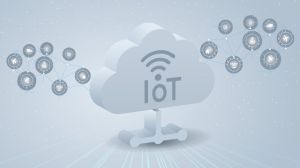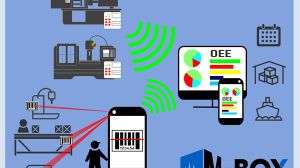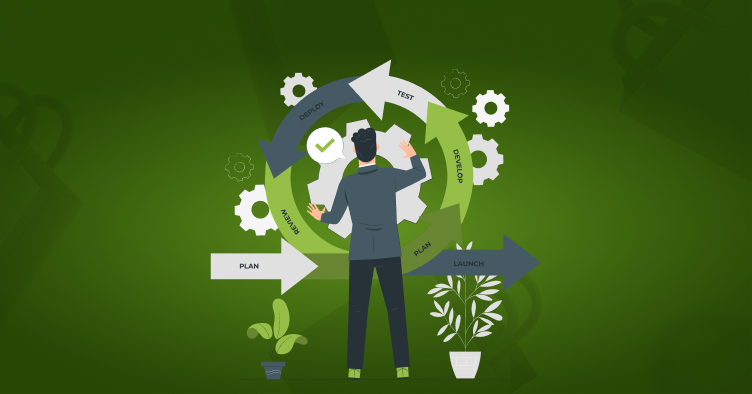Introduction
Connecting devices, sensors, and systems to the internet leads to the Internet of Things (IoT), transforming industries, allowing those devices, sensors, and systems to communicate and exchange data. Still, managing these connected devices efficiently requires that they each have robust software solutions. IoT Monitoring Software fits into this puzzle.
IoT monitoring software ensures proper performance tracking, status, and health of IoT devices for an organization that seamlessly runs, allows real-time data analysis, and resolves problems when they occur. This guide will define IoT monitoring software, show its key features and benefits, and also discuss a few best practices for implementing such types of software.


What is IoT Monitoring Software?
The monitoring software of the IoT is an application highly specialized in its field and aims to monitor, manage, and analyze IoT devices and networks. It accumulates data from numerous connected devices; then it processes the data and sends actionable insights for further optimization of performances.
Contrary to traditional monitoring systems, IoT monitoring software can handle a massively heterogeneous set of devices generally dispersed across multiple locations. In certain industries like manufacturing, healthcare, logistics, and smart cities, real-time monitoring with reporting becomes vital.
Why IoT Monitoring Software is Important
With the rapid growth of IoT devices, the challenges with the management and analysis of the flood of data produced by those devices are increasing. So, IoT monitoring software is important for:
- Device Health Assurance: Monitoring usage and ensuring the faults of devices, predicting failures that have not even occurred yet.
- Performance Optimization: Pave an organization’s path to the realization of inefficiencies and also the ways to optimize device operations.
- Improving Decisions: Actionable feedback from analytics and reporting.
- Improved Security: Detects unauthorized invasion or abnormal activity in IoT networks.
Key Features of IoT Monitoring Software
A basic feature of any good IoT monitoring solution would be a set of tools that can assist in the effective and efficient management of devices. Among the following, a few are more essential than others:
1. Real-Time Monitoring
The state of the monitored devices is constrained by continuous monitoring of the software for sensor readings and monitoring performance. Alerts may be programmed upon abnormal values against specified parameters, such as temperature spikes, line disconnection, and equipment failures etc.
2. Data Collection & Storage
IoT devices generate an enormous amount of data that needs to be collected and stored. The monitoring software collects such data from the data sources and stores it securely in a way that allows easy retrieval for analysis.
3. Analytics & Reporting
The IoT monitoring software provides analytical input concerning trends, patterns, and anomalies. Thus, providing huge inputs for maintenance planning into future upgrades would help the organization to decide.
4. Remote Management
Less downtime and operational costs as administrators troubleshoot and maintain device access from anywhere.
5. Integrated capability
The software seamlessly integrates into other business systems like ERP, CRM, or cloud platforms while ensuring smooth data flow for complete insight.
Types of IoT Monitoring Software
IoT monitoring software exists in several different forms depending on the type of devices, industry, and monitoring requirements:
1. Cloud IoT Monitoring
Cloud solutions allow for easy scaling and flexibility, letting businesses manage their devices without investing in physical infrastructure. Most suitable for organizations with distributed IoT networks.
2. On-Premise IoT Monitoring
On-premise solutions are created and installed on the company’s servers. These solutions provide greater control and security for the organization, but they will incur higher initial investment and maintenance costs.
3. Hybrid Solutions
Hybrid solutions are a combination of cloud and on-premise, providing the company with flexibility on the one hand, and control over sensitive data on the other.
Benefits of IoT Monitoring Software
The benefits of IoT monitoring software are endless and have been availed to different companies that enjoy smoother operations, cost-cutting, and customer satisfaction for the past years.
1. Productivity Boost
By continuously observing their devices, businesses could actually prove where the inefficiencies lie and where performance could be enhanced, thereby driving productive activities.
2. Minimized Downtime
With timely detection of failure, physical devices could be rendered malfunctional before any maintenance was resorted to.
3. Allocation of Resources Effectively
In addition to the consumption of energy, usage of networks, and performance of devices, it is also used to put all the input information to decision-making in terms of resource allocation.
4. Enhanced Security
It’s also not immune to cyberattack – both preventive software and the detection of abnormal activity are considered to be important for it, as they ensure secure communications and protection of classified data.
5. Data-Driven Decisions
These advanced analytics power insight into the ability of devices, user activity, and operational trends that all help inform business decisions.
Industries Using IoT Monitoring Software
Despite not applying only to a single application sector, such software finds use in various application sectors, including:
1. Manufacturing
Thus, IoT monitoring software helps in tracking the performance of machines, predicting maintenance, and lowering downtime in the operation of several machines.
2. Healthcare
Finally, hospitals are now using IoT monitoring to keep track of their medical apparatus, monitor patient health, and keep environmental conditions like temperature and humidity stable.
3. Logistics and Supply Chain
IoT solutions are used for monitoring the vehicles, the loads they carry, and the conditions in the warehousing site to ensure on-time delivery and avoid losses.
4. Smart Cities
IoT monitoring software facilitates the integrity of traffic control, street illumination, water supply, and emergency service systems.
5. Energy and Utilities
Energy companies monitor their power grids, pipelines, and renewable energy systems to avert failures and maximize energy distribution.
How IoT Monitoring Software Works
Understanding such IoT monitoring software will benefit an organization that plans on deploying such a solution effectively. Typically, this process has to cover:
1. Device Connectivity
For IoT devices connected to the software, use either sensors, gateways, or APIs. Once the device is connected to this solution, it will automatically identify itself on the software and begin tracking activity.
2. Data Acquisition
Data are collected continuously with the help of these sensor types regarding measured parameters such as temperature, pressure, humidity, location, or device status.
3. Data Analysis
After that, the algorithms will apply detection of anomalies, trends, or performance metrics to analyze acquired data.
4. Alerting and Reporting
Software creates alerts for critical events and generates reports meant as actionable insight.
5. Action and Optimization
The next steps are usually corrective actions derived from the analysis, optimized use of devices, or planned preventive maintenance.
Choosing the Right IoT Monitoring Software
Essential Considerations to Choose Suitable IoT Monitoring Software:
1.Device Compatibility
The software must be compatible with all your IoT devices and also compatible with the sensors, gateways, and network standards’ protocol compatibility.
2. Scalability
Choose a product that can be scaled upwards with the growth of the IoT network to acquire more devices and process more data without slowing down.
3. Security Features
The software would include such precautions as encryption, access control for users, and the detection of threats as it shields confidential data.
4. Analytics and Reporting Features
Advanced analytic tools provide useful insights to furnish rich reports, which can be made available for decision-making.
5. Ease of Use
A user interface that is friendly to the user, easy setup for the installation, and an efficient, supportive team regarding that would make adoption happen.
Best Practices for IoT Monitoring
Good practices in IoT Monitoring for Organizations:
1. Cleared Goals: Write down what will be monitored and what would be possible with such IoT software before that.
2. Continuous Upgrade of Software: Keep the software updated along with the devices to reduce possible threats to their security.
3. Data Management Policies: Implement data filtering, aggregation, and storage optimization.
4. Monitoring Network Performance: Guarantee network availability, minimize any connectivity problems.
5. Educate People: Employees have to be trained in the efficient use of such IoT monitoring devices.
Conclusion
IoT monitoring software is a tool required for effective operation, management, and analysis of data from connected devices across industries. Choosing the right software, following best practices, and identifying possible challenges will go a long way for a business in optimizing the benefits of IoT and subsequently improving operational efficiency, reducing downtimes, and making data-driven decisions.
That’s why, today, the number of your connected devices, IoT monitoring software should not be optional but rather a strategic necessity for any organization wishing to remain competitive in a connected world.



